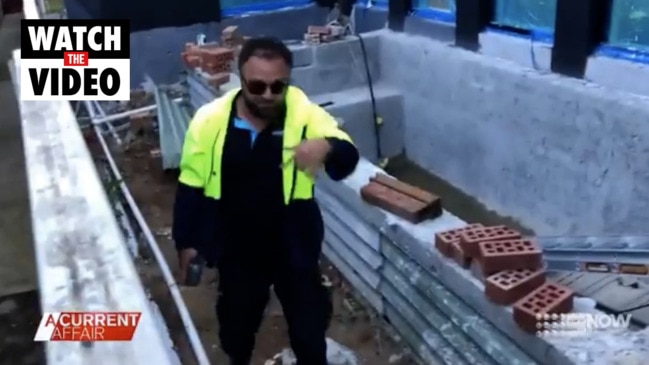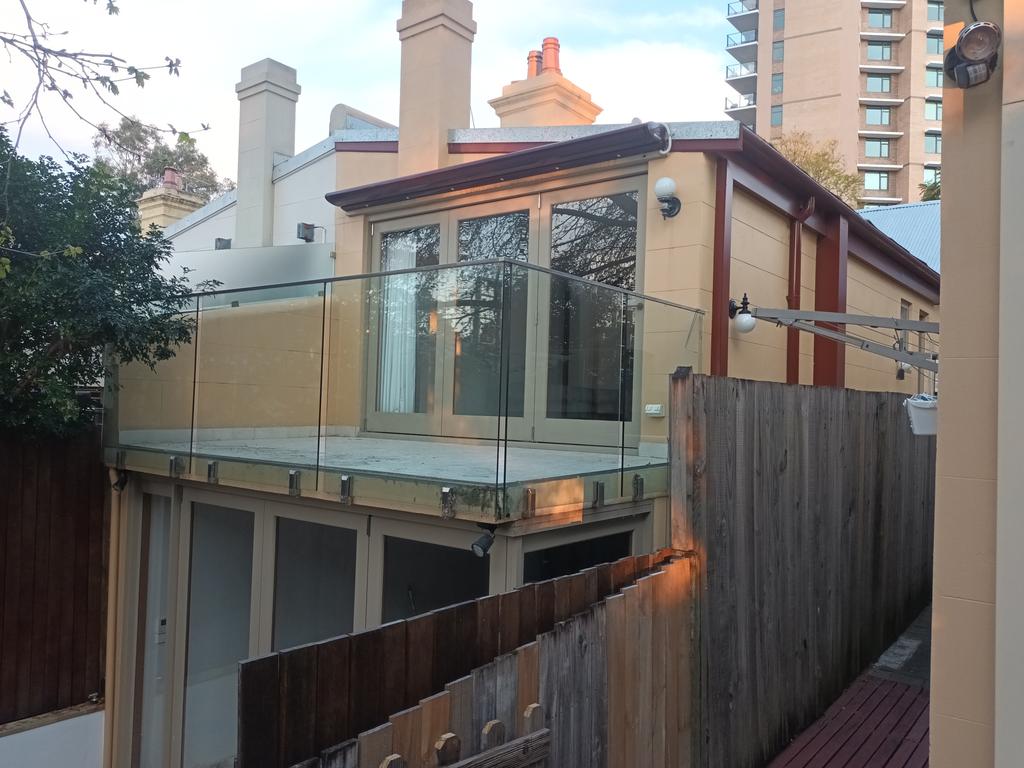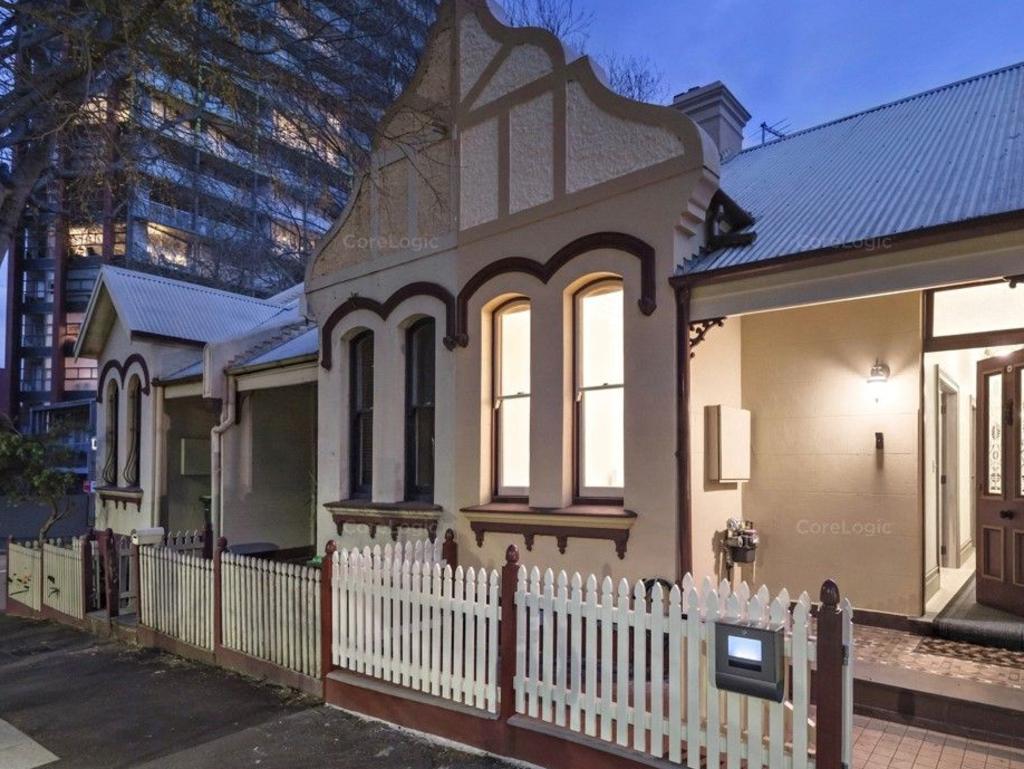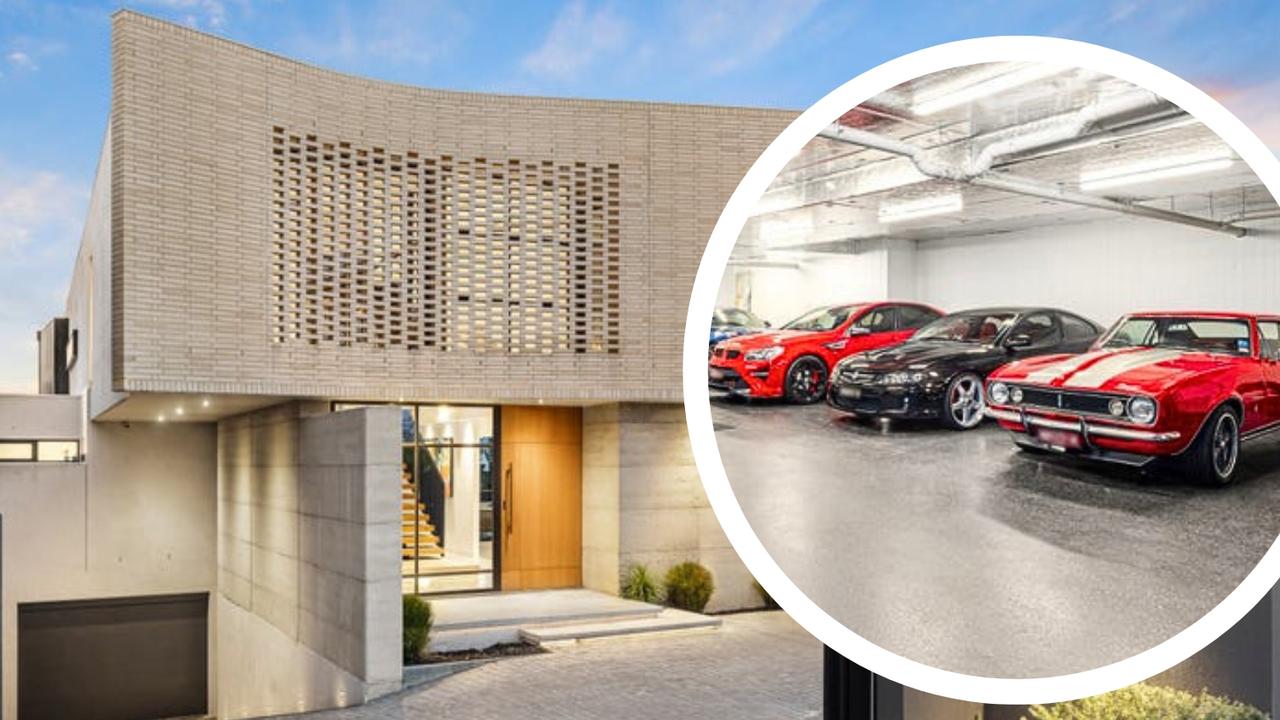‘Crazy’: Huge balcony on historic terrace approved by council after initially issuing demolition order
A Sydney homeowner has blasted a “crazy” situation after his neighbour erected a giant balcony overlooking his home and the council eventually approved it.

EXCLUSIVE
A Sydney homeowner has blasted a decision by the council as “crazy” to give full final approval to a massive balcony behind his neighbour’s heritage-listed terrace — after its owner was initially issued with an order to demolish the add-on.
Next-door neighbour Will Warner, 38, has described the saga around the towering balcony now overlooking his inner-city backyard as a “crazy set of circumstances”.
“It impacts the sunlight reaching my house, my family’s privacy, and the heritage of this listed building,” he told news.com.au.
“It’s not how the planning system is supposed to operate and it’s likely pretty embarrassing for the council.”
But owner Nick Barbov, 70, has hit back over the balcony saga, insisting he has done nothing wrong and accusing the council of abusing the heritage process.
“Under the mask of heritage issues council officers overdo their duty and terrorise us citizens,” he said.
“I went through hell to build this balcony. They put me in a very difficult position in my life. Because of them I wasn’t able to sell my property and wasn’t able to retire. I’ve started to work as a traffic controller. I’m in the red because of this nearly $100,000.”
Of his neighbour Mr Warner, he added, “He’s upset because of my balcony – I’m upset because of his balcony and his behaviour.”
Want to stream your news? Flash lets you stream 25+ news channels in 1 place. New to Flash? Try 1 month free. Offer ends 31 October, 2022 >

The 130-year-old home, constructed in the 1890s, is one a row of seven heritage-listed terraces on John Street, Pyrmont, that were saved during the redevelopment of the Pyrmont Peninsula area around the time of the 2000 Olympics.
Property records show the four-bedroom, two-bathroom house was last sold in 2014 for $900,000 — and today is valued at an estimated $2.7 million.
In 2015, Mr Barbov submitted a development application to the City of Sydney to construct a large balcony extending from the rear bedroom of the low-set home, as part of a broader renovation.
The request was initially rejected, with the DA allowing only for a “juliette balcony centrally located in the rear wall and extending not more than 100mm from the rear wall of the bedroom”.
Despite that outcome, the balcony was constructed.
In 2021, after a visit by an investigation officer from the City of Sydney, council issued an order “to demolish the non-approved balustrade at the rear of the master bedroom level and construct the balustrade approved” under the DA.
“A review of the approval history of the premises identifies that these works are not approved,” the December 16, 2021 letter said.
“The amenity of the neighbouring properties and the occupants of the building is affected, insofar as the balcony overlooks adjacent properties … and would likely not be supported if a DA were lodged. The deck overlooks the rear yard and rear deck of [the neighbouring house], and has views directly into the side window of the kitchen.”

The order gave Mr Barbov a compliance period of 60 days.
“It is an offence pursuant to Section 9.37(1) of the Environmental Planning & Assessment Act to fail to comply with this Order,” the letter said.
“You are reminded that should the order not be complied with, council may commence legal proceedings in the Land and Environment Court of NSW seeking mandatory orders, costs and a penalty.”
The letter added Mr Barbov may appeal to the Land and Environment Court against the order.
“An appeal must be made within 28 days after the service of the order on you,” it said. “Any such appeal does not effect a stay of the order.”
Contrary to the threatening tone of the letter, however, the 60 days lapsed with no demolition.
Then in late April, more than two months after the compliance period had lapsed, Mr Barbov submitted a Section 4.55 application to modify the existing DA.
“When an order is issued over unauthorised works in the City, the owner of the relevant property may lodge a Section 4.55 application to amend the works,” a City of Sydney spokeswoman said in a statement to news.com.au.
“In this case, enforcement of the demolition order was suspended so the s4.55 application could be determined.”
Last month, the City of Sydney approved the revised DA to put up a large frosted glass panel instead.
“The development, as modified, is substantially the same as that originally approved,” council said in its reasons for approval.
Council noted three community submissions had been received for the DA and “issues raised in all submissions have been taken into account”.

“Incredibly the balcony can be retained if the owners simply add a privacy screen,” Mr Warner said.
“It’s not like they never had a position on it. The council said no [in 2015] because of privacy, heritage, bulk and scale. Now they’ve approved a DA to put a pool fence on the edge of a heritage-listed terrace.”
Mr Barbov, however, argued it was “ridiculous” that the council had originally denied his request “but at the same time they allowed all the rest” of the six terraces to have balconies.
The structural designer added he and his wife, an architect, had put in a “lot of effort” during their excavation and renovation to “stabilise the entire group and to make it heritage”.
“And at the end of the day they recognised I did the best job of all seven terraces, and because I did the best job they punish me,” he said.
In a heritage impact statement submitted to council by Mr Barbov, a third-party expert argued the glass balcony “complements [the home’s] historical architectural features”.
“There are no adverse heritage impact issues related to the works,” the report said.
The NSW State Heritage Inventory describes the seven houses as a “relic of the nineteenth century development of Pyrmont/Ultimo as a predominantly industrial and warehouse suburb attached to the city”.
“Large areas of terrace housing were built and owned by wealthy landlords and let to working class people employed in the area, interspersed with occasional better-quality houses occupied by local merchants,” it reads.
“The sitting of these terraces within the Colonial Sugar Refinery (CSR) complex reflects the company’s provision of housing to its employees.”

Mr Warner said he couldn’t understand why council had not taken any action to enforce the demolition order.
He argued his experience showed the City of Sydney was not serious about supporting heritage architecture and protecting residents’ quality of life from overdevelopment.
“This is an instance where they don’t stand by their position and are unwilling to use their powers,” he said.
In its statement, the City of Sydney said it “carefully reviews, evaluates and makes decisions on planning applications in a range of urban environments”.
“We are committed to striking a balance between allowing owners to redevelop their property and minimising the impact on neighbours,” the spokeswoman said.
She said the “key component” of the DA modification was the inclusion of the privacy screen.
“Council thoroughly reviewed the application and inspected the site before making a decision,” she said.
“Our planners looked at the heritage of the street and determined the balcony was in keeping with the rest of the dwellings where upper level rear balconies and large elevated decks are a common feature. They also determined that as it was a bedroom balcony it was unlikely to be heavily used, a factor which influenced the City’s decision. There were no unreasonable view loss or solar access impacts resulting from the balcony. The approved development, subject to conditions, is compliant with City planning controls.”
She noted council was “required to balance the sometimes competing needs of its residents when assessing applications and modifications against our planning controls”.
“Given the density of inner-city development, where residents are in smaller lots sizes with limited separation between residents, we work with applicants to try and best mitigate the impacts on neighbours in these areas,” she said.
Read related topics:Sydney






